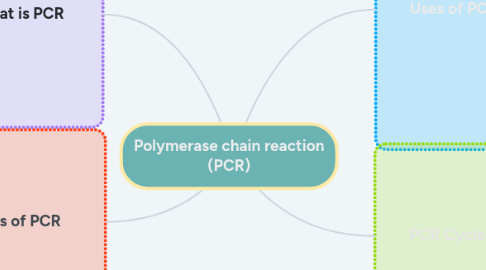Polymerase chain reaction (PCR)
por AMIRUL FIRDAUS


1. What is PCR
1.1. Selective amplification of a chosen region of a DNA molecule
1.2. Requires information of DNA sequence at the borders to design primers
1.3. Amplification of DNA are carried out by thermostable Taq polymerase
2. Basic rules of PCR
2.1. Polymerization occurs only in the 5' to 3‘ direction
2.2. Polymerization requires a template to copy: the complementary strand
2.3. Polymerization requires 4 dNTPs: dATP, dGTP, dCTP, dTTP
3. Uses of PCR
3.1. Consumer genomic
3.1.1. nutrigenomics is a specific form of consumer genomics linking genetic information to information about foods that might be better or worse for particular conditions.
3.2. Forensic science
3.2.1. the identification of criminals and the collection of organic crime scene evidence such as blood, hair, pollen and etc.
3.3. Medicine
3.3.1. used to diagnose and therefore aid in the treatment of many diseases
4. PCR Cycle
4.1. 1. Template denaturation
4.1.1. usually at 94 celcius
4.2. 2. Primer annealing
4.2.1. annealing happen around at 54 celcius
4.3. 3. DNA elongation
4.3.1. Extension around 72 celcius
